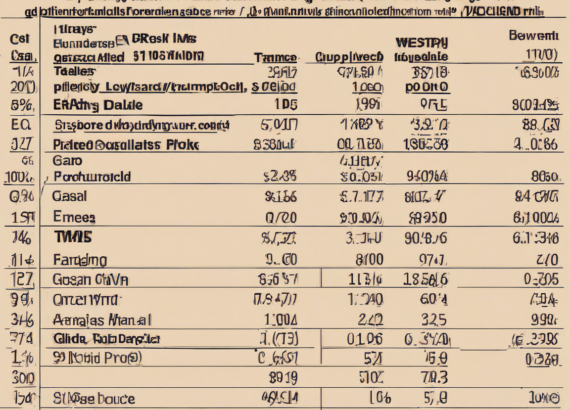Investing in the stock market can be a lucrative way to grow your wealth over time. However, before diving into any investment, it is crucial to conduct a thorough analysis of the share price trends of the particular stock you are interested in. In this article, we will explore the concept of share price trends, why they are important, how to analyze them, and what factors can influence them. We will also provide some tips on how to interpret share price trends effectively to make informed investment decisions.
Understanding Share Price Trends
Share price trends refer to the historical movement of a stock’s price over a period of time. By analyzing share price trends, investors can gain valuable insights into how a stock has performed in the past, which can help them predict how it might perform in the future. Share price trends are often depicted in line charts, candlestick charts, or bar charts, which show the stock’s price movements over days, weeks, months, or even years.
Why are Share Price Trends Important?
Analyzing share price trends is essential for several reasons:
-
Spotting patterns: By studying share price trends, investors can identify patterns such as uptrends, downtrends, or consolidation phases. This information can help investors make more informed decisions about when to buy or sell a stock.
-
Risk management: Understanding share price trends can help investors assess the volatility of a stock and manage their risk accordingly. Stocks that exhibit stable, consistent trends may be less risky than those with erratic price movements.
-
Setting realistic expectations: By analyzing share price trends, investors can set realistic expectations about a stock’s potential future performance. If a stock has been consistently growing in value, investors may expect this trend to continue, but there are no guarantees in the stock market.
How to Analyze Share Price Trends
When analyzing share price trends, investors can use various technical analysis tools and indicators to gain deeper insights into a stock’s performance. Some of the key methods include:
-
Moving Averages: Moving averages smooth out price data to identify trends over a specific period. The 50-day moving average and the 200-day moving average are commonly used to identify short-term and long-term trends, respectively.
-
Relative Strength Index (RSI): The RSI measures the speed and change of price movements and can indicate whether a stock is overbought or oversold.
-
Support and Resistance Levels: These levels represent price points at which a stock often pauses or reverses its trend. Identifying support and resistance levels can help investors make decisions about when to buy or sell a stock.
-
Volume Analysis: Analyzing trading volume can provide insights into the strength or weakness of a trend. Increasing volume often confirms a trend, while decreasing volume may signal a potential reversal.
Factors Influencing Share Price Trends
Several factors can influence the share price trends of a stock, including:
-
Market Sentiment: Investor sentiment and market news can impact a stock’s price movement. Positive news about a company or industry can drive stock prices higher, while negative news can lead to declines.
-
Economic Indicators: Economic data such as GDP growth, interest rates, and employment reports can affect stock prices. A strong economy generally leads to rising stock prices, while a weak economy can result in declines.
-
Company Performance: Earnings reports, product launches, and other company-specific events can influence a stock’s price movement. Strong earnings or new product announcements can lead to price increases, while poor earnings or negative news can cause declines.
-
Industry Trends: Industry-specific factors, such as regulatory changes, technological advancements, or competition, can impact stock prices within a particular sector. Understanding these trends is essential for predicting price movements.
Tips for Interpreting Share Price Trends
To effectively interpret share price trends and make informed investment decisions, consider the following tips:
-
Combine Technical and Fundamental Analysis: Use a combination of technical analysis tools and fundamental analysis to gain a comprehensive understanding of a stock’s performance.
-
Diversify Your Portfolio: Diversification can help mitigate risk associated with individual stocks and share price trends. Invest in a variety of sectors and asset classes to spread risk.
-
Stay Informed: Keep up-to-date on market developments, company news, and economic indicators that can impact share price trends.
-
Set Realistic Goals: Set realistic expectations when analyzing share price trends. Remember that stock prices can be volatile in the short term.
-
Consult with Financial Advisors: If you are unsure about how to interpret share price trends or make investment decisions, consider seeking advice from financial advisors.
Frequently Asked Questions (FAQs)
1. What is the significance of short-term vs. long-term trends in share prices?
Short-term trends can provide insights into immediate price movements, while long-term trends offer a broader perspective on a stock’s performance over time.
2. How can I identify potential trend reversals in share prices?
Look for technical indicators such as divergences, breakouts, or changes in volume that may signal a trend reversal.
3. How do news and events impact share price trends?
Positive news or events can drive stock prices higher, while negative news can lead to declines as investor sentiment shifts.
4. Is historical share price data an accurate predictor of future performance?
While historical data can provide insights into trend patterns, it is not a guarantee of future performance as market conditions can change.
5. How can I use share price trends to set stop-loss orders?
Identify support levels where a stock may stop declining and set stop-loss orders slightly below these levels to limit losses in case of a trend reversal.
In conclusion, analyzing share price trends is a crucial aspect of stock market investing. By understanding trend patterns, utilizing technical analysis tools, and staying informed about market factors, investors can make more informed decisions about when to buy, sell, or hold a stock. Remember to diversify your portfolio, set realistic goals, and seek professional advice when needed to navigate the volatility of the stock market effectively.







